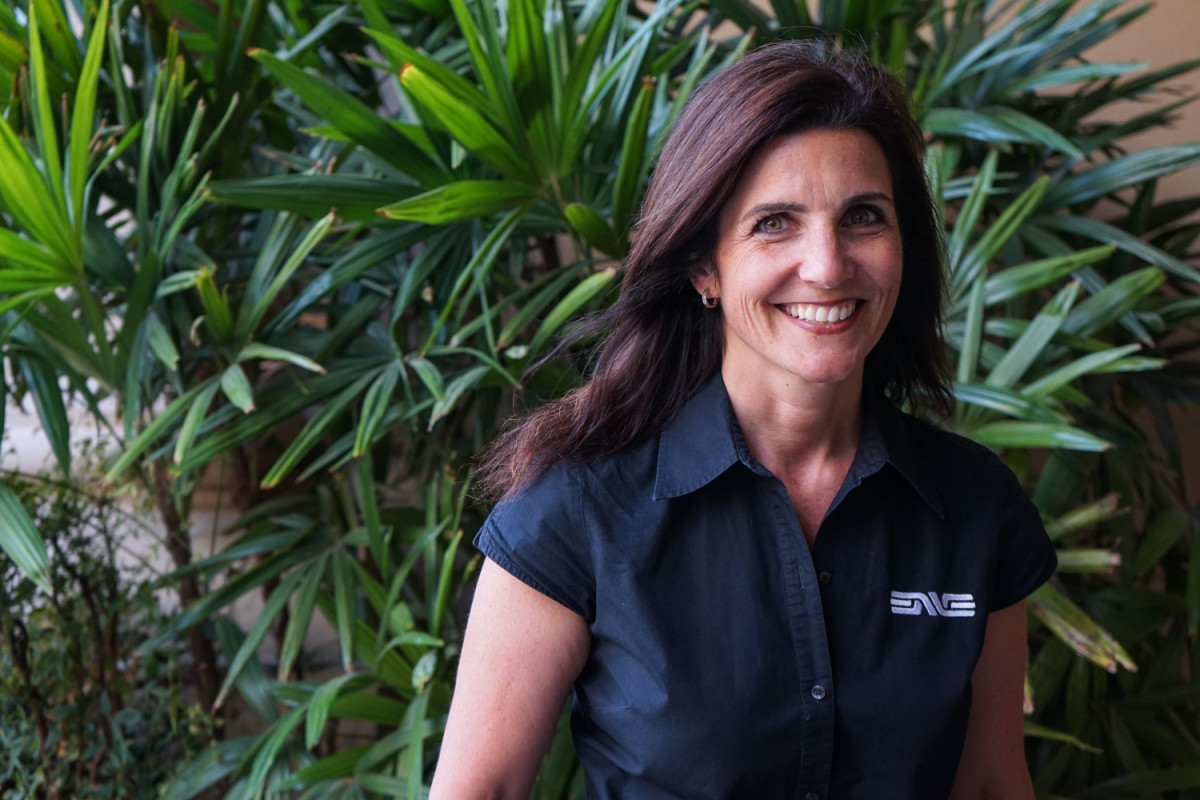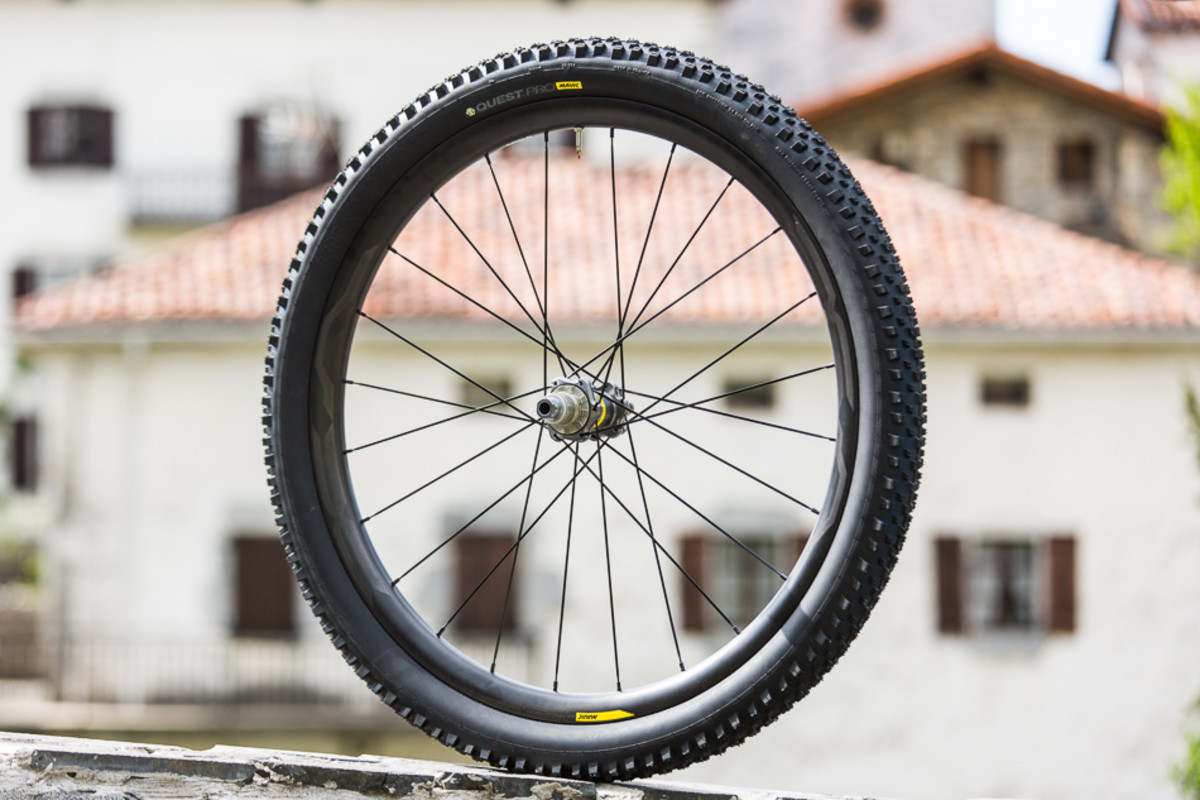Sarah Lehman explains how the brands will operate under the same ownership
Earlier this year, the parent company of Mavic, Amer Sports, purchased Enve Composites in a $50 million deal, bringing both wheel brands under one figurative roof. So what does that really mean for the wheel market? And more importantly, for you, the person who may actually be looking to buy those wheels?
The short (and optimistic) answer is better global availability, improved customer service and faster innovation, for both brands. The long answer is, well, longer.
We recently sat down with Sarah Lehman, Enve’s CEO and the commercial director for Mavic’s business in the Americas, to find out what the acquisition means going forward. Lehman and her husband invested in Enve in 2010 (and eventually bought out co-founder Jason Schiers, while the other two co-founders stayed on) and Lehman has served as CEO since that time. She broadened her role to include Mavic responsibilities after the sale.

Since the deal closed in March, Mavic and Enve have combined their sales forces and brought customer and warranty service and dealer support for the U.S. into Enve’s new headquarters in Ogden, Utah, as well as combined those operations in Europe. It’s also formed an umbrella group focused on big-picture innovations for both brands, headed by Matt Robertson, Shimano’s longtime mountain bike product manager.
But Lehman said R&D, design, prototyping and most production will remain separate, with Enve operations based in Ogden and Mavic at its headquarters in Annecy, France.
The brands will remain positioned where they are now in the marketplace, despite some overlap at the premium end of the spectrum. That means we aren’t likely to see alloy Enve-branded rims, capitalizing on Mavic’s heritage, and Mavic won’t be phasing out its carbon-fiber wheels due to Enve’s position at the top end of the carbon rim market.
“From a branding and marketing and an R&D perspective, we’re being as deliberate as we can to maintain the DNA of the brands, while also leveraging what each of us knows about our respective expertise,” Lehman said. “Certainly Mavic has just launched a bunch of carbon wheels. They’re not going to be relegated to being an only-alloy company. That doesn’t make sense for Mavic.” Enve also won’t be branching into neutral support, Mavic’s historic area of expertise.
Since its inception in 2007, Enve has championed U.S. manufacturing, and all of Enve’s rims and most of its components are still made in Ogden. It supplies primarily boutique frame builders and customers willing to pay premium prices to fully customize their wheelsets around Enve’s rims. Mavic makes its alloy wheels in France and most of its carbon offerings at its facility in Eastern Europe. Enve recently started making Mavic’s XA Pro Carbon mountain wheels in Ogden, due to an issue with Mavic’s original manufacturing partner. If that manufacturing partnership evolves in the future, it will be limited, Lehman said.
“Clearly the intention is not that we make it all, but where it makes sense, of course we would leverage those capabilities,” she said.
So what will you see? A big focus for Mavic is improved customer service–things like listing a phone number on its website that directs customers to an actual live person–and coming quicker to market with innovations. Although Mavic launched the wheel system concept in 1996 with Crossmax, followed up by the first tubeless system three years later, in recent years, Mavic has fallen behind on innovation–the XA trail wheels introduced back in May represent Mavic’s first carbon mountain wheel, arriving several years after its competitors. That’s where Robertson’s group–dubbed the ‘Cycling Anticipation Group’– will come in; it’s tasked with staying ahead of consumer needs.

“Our goal for Matt is to look out three, five, 10 years and look at how consumers are evolving, how the industry is evolving and help us evolve. That’s a gift to a company to have someone who’s not bogged down with what’s next in the next 12 months. So he’s got a team in Annecy that’s dedicated to Mavic and he’s got a team in Ogden that’s dedicated to Enve. That group will ultimately just be looking out and saying, ‘Where do we go from here?’”
In the short-term, on the Enve side, the U.S. brand will leverage Mavic’s global reach–it’s already signed on 21 new international distributors in the past four months–and continue expanding its U.S. manufacturing. It recently moved into a new headquarters three times the size of its last building with a significant improvement in manufacturing operations. The layout of Enve’s old building was so haphazard that an internal study found that a rim traveled up to an extra 100 miles in the manufacturing process; the new facility is built around efficient flow. It may expand its offerings, but likely won’t be straying far from the high end.
“It feels like we still have a lot of opportunity on the bike and beyond. We have no intention of being all things to all people, though. That’s not Enve. We want to be quality performance, we’re OK playing where we play. We still look at the bike and we look at the rider and we say there’s a lot of opportunity still left for Enve to grow and expand.”
Enve is also navigating the transition from private ownership to being part of a publicly traded, multinational conglomerate–the Finnish Amer Sports also owns Salomon, Wilson Sporting Goods, Atomic, Arc’teryx, Suunto and Precor–but a year-and-a-half since Lehman first started talking to Amer, she said there’s no indication executives want to change anything about Enve.
“The feedback from an Enve perspective that I’ve gotten is: What do you need to grow? Are you investing? Those to me are the greatest questions ever. If you have ideas of how you want to grow and someone says, ‘Do you have plans in place to grow and invest?’ Heck, that’s great.”
And Lehman promises that she’s ready to fight to preserve Enve’s brand identity, something that can often be compromised when a small brand becomes part of a large corporation.
“I tell my people all the time, I’m willing to walk the plank,” she said.
Article by nicole formosa
Original Post Here.





















































